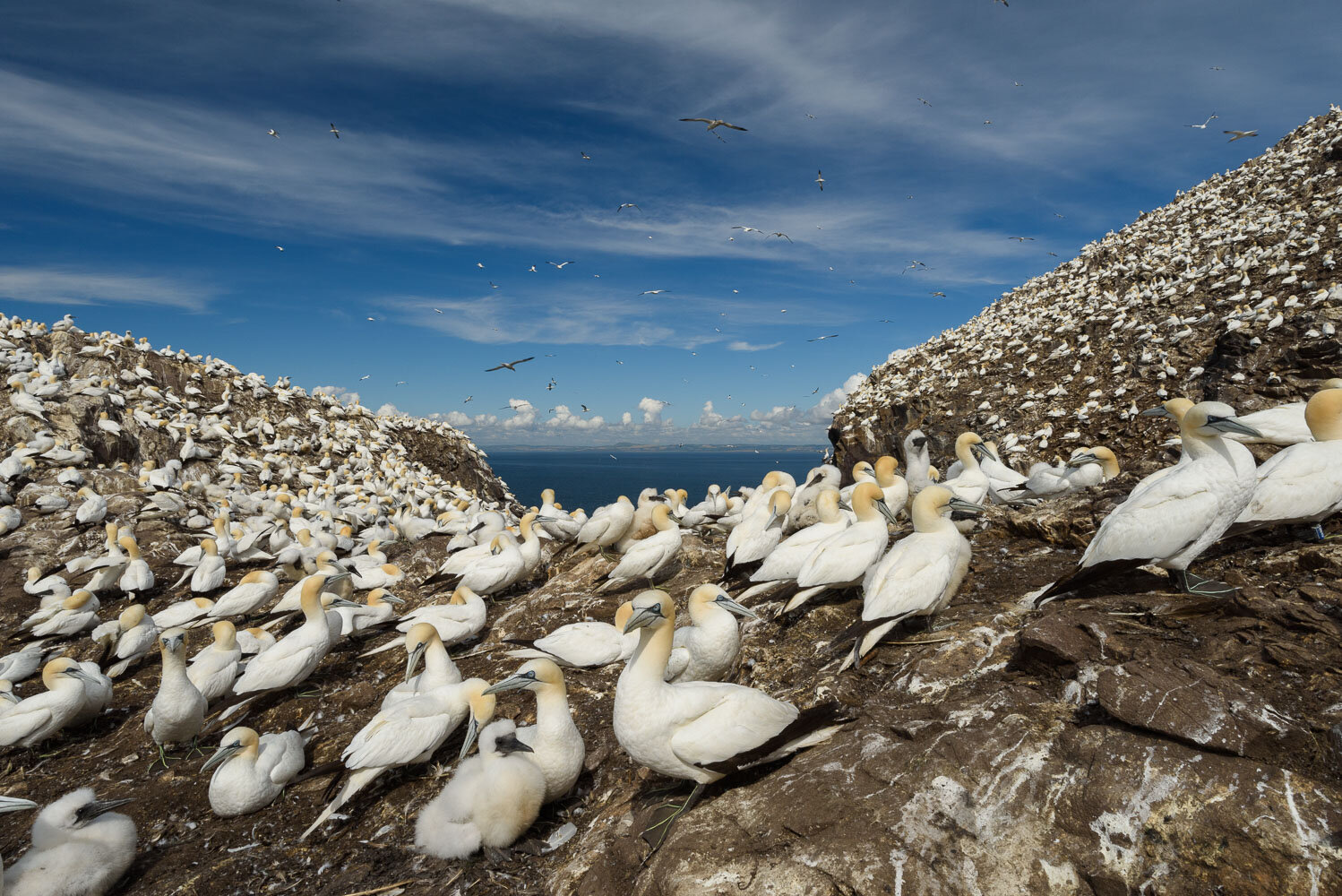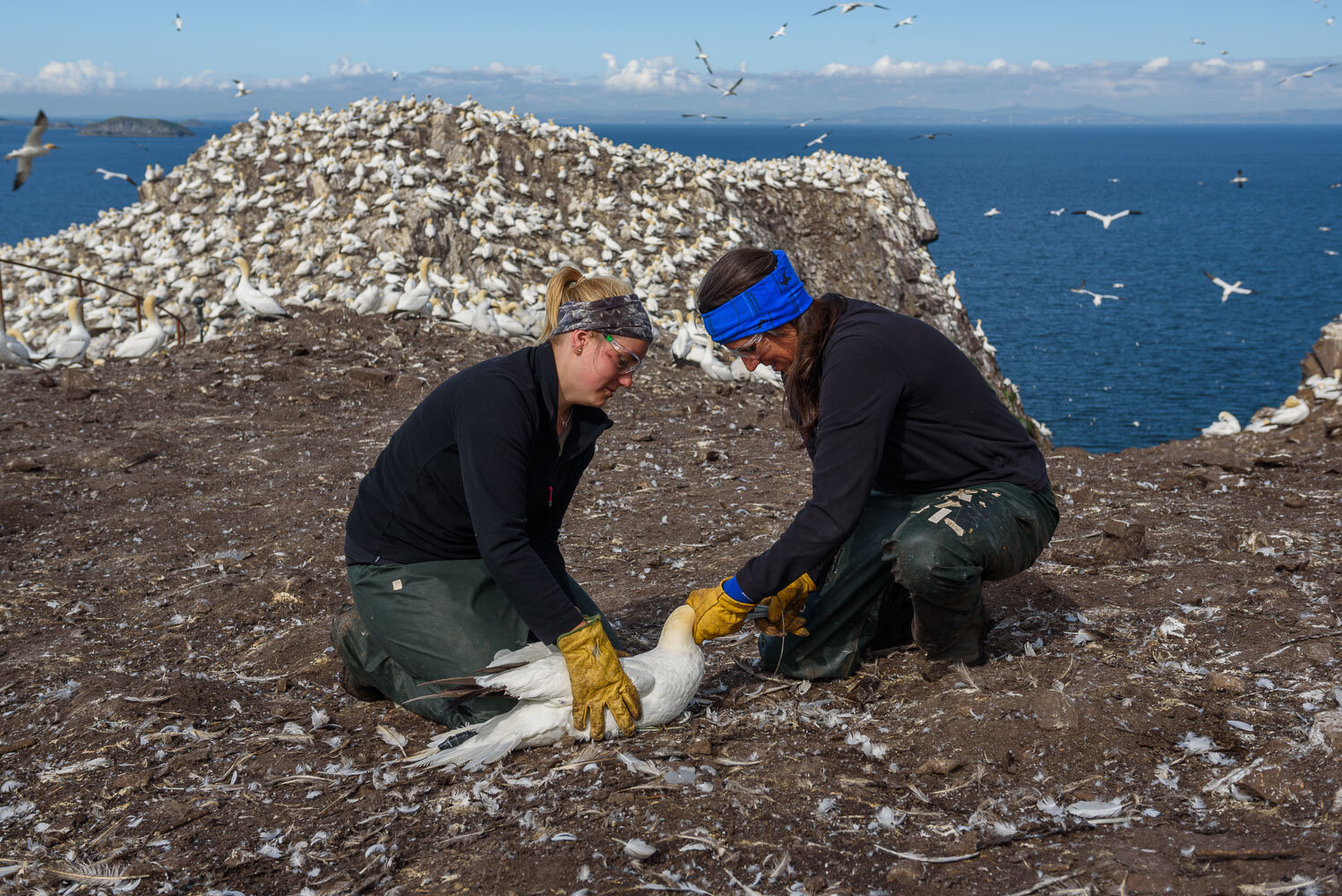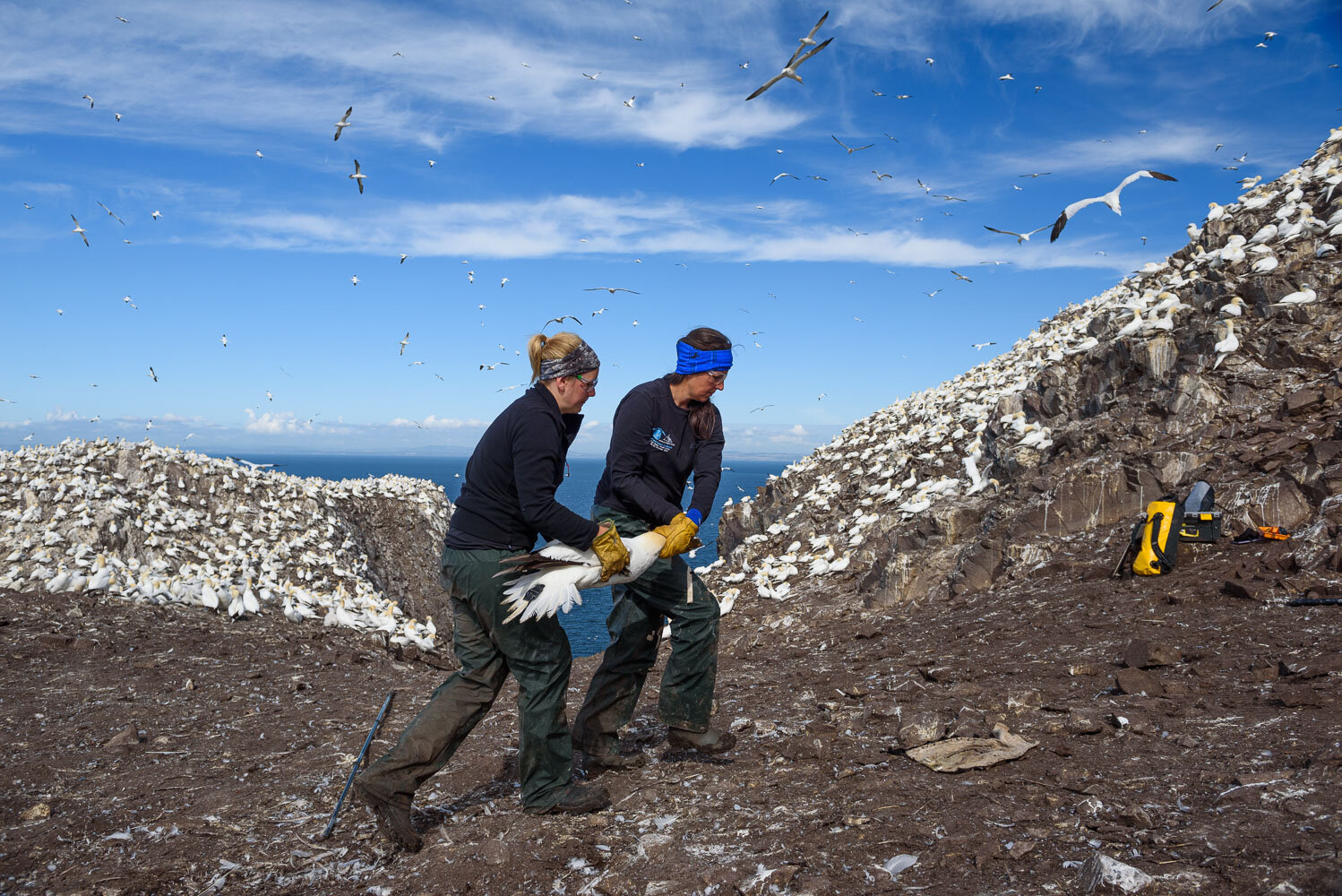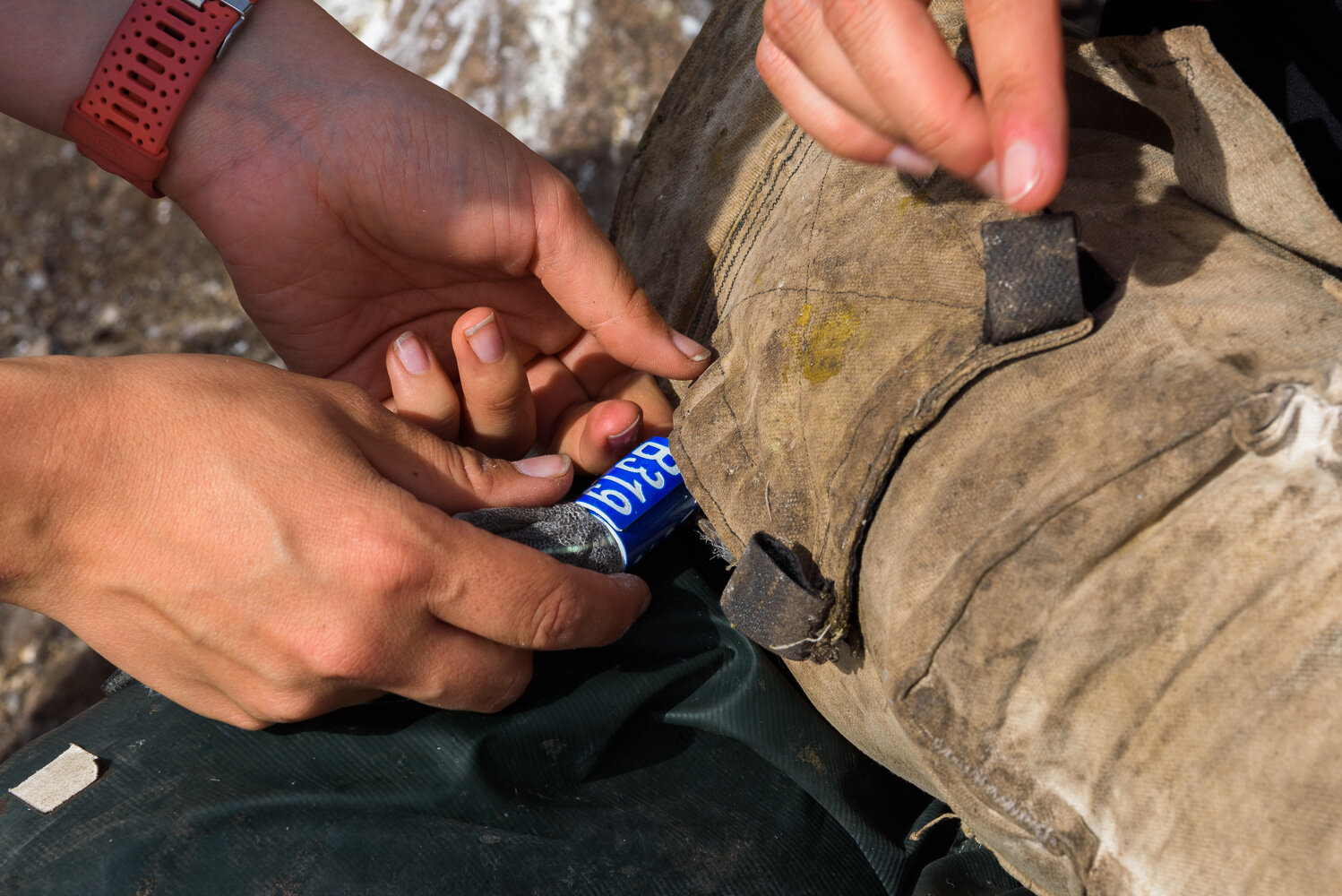Bass Rock Gannet Research
Bass Rock
The first thing that hits you as you approach Bass Rock by boat is the smell, the smell of ammonia from the accumulated guano from hundreds of thousands of seabirds that make the rock their home during the breeding season. The second thing that hits you is the noise of the seabirds as they go about their lives, jostling for space on the ground on the island and as they fly around the rock.
Bass Rock is situated just over a mile offshore in the Firth of Forth. The island is a volcanic plug that rises to 107 metres at its highest point above the sea. The island has a long history having been the site of an early Christian hermitage, a castle and former prison. The island's lighthouse was built by David Stevenson, the cousin of Robert Louis Stevenson. The remains of the castle and St Baldred's chapel can be found on the island. Following the automation of the lighthouse, there are no longer any human inhabitants on the island. The island is now home, in the breeding seasons, to thousands of seabirds including breeding cormorants, eider ducks, guillemots, razorbills and several species of gulls. However, the island is dominated by over 150,000 northern gannets that make the colony on Bass Rock the single largest island colony of northern gannets in the world. Unlike most seabirds, the number of gannets on Bass Rock (and other colonies around the United Kingdom) is increasing.
Gannet Research
I had travelled from my home to North Berwick, where I spent a slightly uncomfortable night sleeping in my car, before meeting Jude Lane and Ruth Jeavons, two PHD students from Leeds University who are studying the gannets on Bass Rock. Jude and Ruth had arranged for a local crab fisherman to take us in his boat from the small harbour at Seacliff to the landing on Bass Rock.
A short but steep walk up from the landing site leads to the study site near the remains of St Baldred's Chapel, the only area where the gannets are studied for the purposes of research. On the walk, we pass through the large number of non-breeding juvenile gannets on the rocks immediately above the landing site, through the gates of the old prison and to the Lighthouse where the study equipment is stored when not in use. As we walked up the final part of the concrete path to the study site, gannets breeding by the side of and on the path nipped at our ankles.
To catch the individual gannets being studied, Jude and Ruth use a 6 metre pole with a noose on the end. Gannet "wrangling" is not easy, adult birds weigh up to 3.5kg and have a wing span of 1.8 metres, then there is their beak which is designed for catching fish underwater. Safety goggles and heavy duty gloves have to be worn when catching the gannets. After being caught, the gannets are placed in a canvas harness that keeps the gannets safe and secure when being handled. The gannets are handled firmly but with care so as not to harm them.
Jude and Ruth are studying the foraging behaviour and efforts of gannets, including a comparison between the behaviour of immature and mature birds. The research is part of a long term study programme run by Professor Keith Hamer from the University of Leeds which has also included work on the risks posed to the gannets by windfarms by establishing the heights the gannets fly, the paths they take and the locations they forage for food. Data logging devices attached to the gannets record the flights paths they take when foraging for food. Ruth is, in addition, also using accelerometers that measure the acceleration of the gannets in flight, which gives an indication of the energy efficiency of certain flight behaviour. The data logging devices have to be removed in order that the data they contain can be downloaded and analysed. As well as removing the data logging devices, when the gannets are captured they are weighed and measured.
Health Of Our Seas
The research being undertaken on the Bass Rock gannets is one part of the research on seabirds that is being undertaken around the United Kingdom and Worldwide. The research is important for the continuing health and the survival of the World's seabirds. Seabirds are an indicator of the health of our seas, as such this research is also important for establishing the health of our seas which has a direct impact on the health of our planet and all animals, including humans, living on it.
Visiting Bass Rock
If you are interested in visiting Bass Rock, the Scottish Seabird Centre runs exclusive landing trips. The trips are led by experienced wildlife guides, including Maggie Sheddan who has been a landing guide for over 15 years, and offer great opportunities to photograph the gannets.
















